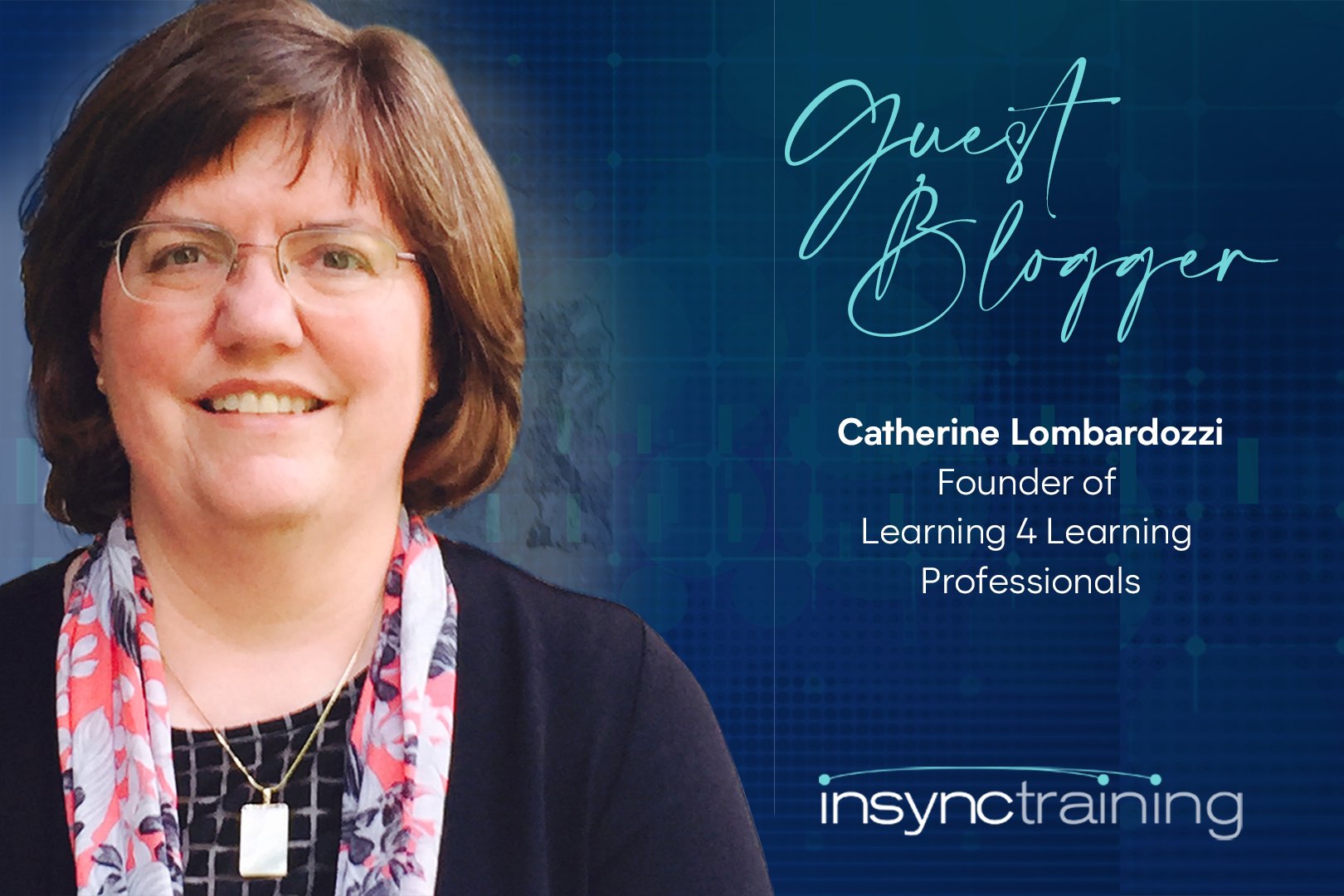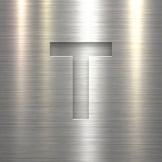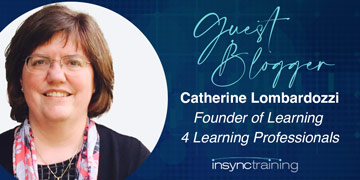4 min read
Developing a Skill Set That Fits You to a 'T'
 Catherine Lombardozzi
:
Sep 26, 2022 7:00:00 AM
Catherine Lombardozzi
:
Sep 26, 2022 7:00:00 AM

Part of InSync Training's Thriving as a Learning Professional Series
Deciding how to shape your career has any number of decision points: What field? What kind of role? Management track or professional track? Your answers to these kinds of questions lead you to specific opportunities along your career trajectory. And those answers also inform your learning goals as you progress – the skills that you choose to develop.
In diverse career fields like L&D, career success is enabled by having a t-shaped skill set.  T-shaped skill development suggests that you dive deep into one or more specialty skills (the stem of the T) while also developing a wider range of skills or broader understanding of the field (the crossbar of the T).
T-shaped skill development suggests that you dive deep into one or more specialty skills (the stem of the T) while also developing a wider range of skills or broader understanding of the field (the crossbar of the T).
At the start of your career, you’re dancing along the crossbar, exploring entry-level roles and getting a broad view of the field and the different ways that people contribute within it. As your career progresses, you’ll start to deepen your skills in one or more specific areas, positioning yourself for desired roles and ways you want to make an impact. Throughout your career, though, you need to attend to developing knowledge and skill on the stem and on the crossbar both, strengthening skills and expanding your wider view at the same time.
Develop depth
Producing high quality work stems from (pardon the pun) the solidity of your stem – your depth of expertise.
That expertise is earned through experience, ongoing informal learning, and interaction with fellow specialists. A recent McKinsey report underscored how important experience is to career success, and it’s just as critical for developing real skill. Learning from your work experiences requires engaging repeatedly in similar tasks, taking on challenging projects, and reflecting on actions and results. As you gain competence, you’ll shift from relying on training and other structured learning opportunities toward more informal sources like expert journals, conferences, and deep reading. You use the knowledge you garner from these sources to improve your practice. And your ongoing interaction with fellow specialists gives you access to others’ experiences, insights, and feedback – especially if you can engage with a community of practice. Specialists work together to challenge each other, analyze successes and failures, experiment, and co-create knowledge and new practices.
Don’t limit yourself to expertise in just one area, though. Your ability to make valuable contributions and establish yourself as an expert often depends on having a combination of deep skills. A well-crafted skill stack can uniquely position you to contribute and make you a highly valued member of a team.
“The idea of a talent stack is that you can combine ordinary skills until you have enough of the right kind to be extraordinary. You don’t have to be the best in the world at any one thing. All you need to succeed is to be good at a number of skills that fit well together.” ~ Scott Adams
This strategy of skill-stacking has become a career watchword in recent years. Some people flourish by combining two skills, such as the e-learning freelancer who is both an expert instructional designer and a real wiz at specific development tools that bring the design to life. Others find career success by combining a specialized expertise and a thorough understanding of a specific context or industry, like the facilitator who focuses on IT training. Even those who might describe themselves as jack-of-all-trades likely have a short list of extra-strong skills that allow them to meet the demands of their context well.
Develop breadth
No matter the depth of your expertise, it’s important to fully understand the wider context of your work. You need to grasp how the various areas within your organization interact as a complex system. Even if you couldn’t do the work your colleagues do, you’ll benefit from knowing just a little of their work practices, their goals, and their knowledge base and skills. It helps you to be a better team player and to recognize when their skills are needed or when your work might create issues for others. Breadth allows you to speak other’s language and make better hand-offs.
That wider view is also often the key to creative insights – you are better able to make connections and see different solutions. Having some level of breadth is a good career move as well, so you’ll know about options when jobs in your specialty become scarce or when you are considering a change in your career path.
Developing breadth is a different kind of learning goal. Instead of concentrating on one subject, you want to find learning resources that deliver a broader perspective. Reading industry journals, listening to podcasts, attending conferences, and networking with professionals in other departments or fields are good strategies. Your personal knowledge network is a helpful source, as is a strategy for curating news on varied topics. Engaging with cross-functional projects, working on short assignments, dabbling in other specialties on the side, taking foundational training in other areas, and making lateral moves also help to build your understanding of the big picture. Acquiring breadth is often an accumulation of small inputs rather than a concentrated study.
An aspect of breadth is developing your range of professional and leadership skills to support your work contributions. Honing interpersonal communication, digital literacy, data analysis, and other skills helps you to contribute even if your primary role doesn’t require you to be fluent in these areas. Josh Bersin has recently described a “full stack” HR professional as demonstrating skills in domain expertise, consulting and problem-solving, business acumen, technology savvy and data intelligence, and leadership.
A "T-Shaped" development strategy
There is no shortage of potential crossbar knowledge bases and skills you might develop to support your career success in addition to becoming an expert in the arena that excites you most. When people craft development plans, they often focus on the stem of their T–they commit themselves to actions that deepen their expertise or seek to begin developing competence in a different skill. But you should also consider incorporating strategies that cross the T–ways to keep yourself abreast of parallel or tangential areas that give you a more well-rounded perspective.
Want to learn more? Download InSync Training's 54-page guide: Thriving As A Learning Professional.

Watch & Learn: 10 Observational Learning Tips for Professional Development
If you have little children in your life, you no doubt have experienced the joy (or chagrin) of seeing them imitate what you do. They pick up your...

The Mirror: A Valuable Evaluation Tool
Part of InSync Training's Thriving as a Learning Professional Series Mirror, mirror, on the wall... When the evil queen asks her magic mirror, “who’s...

